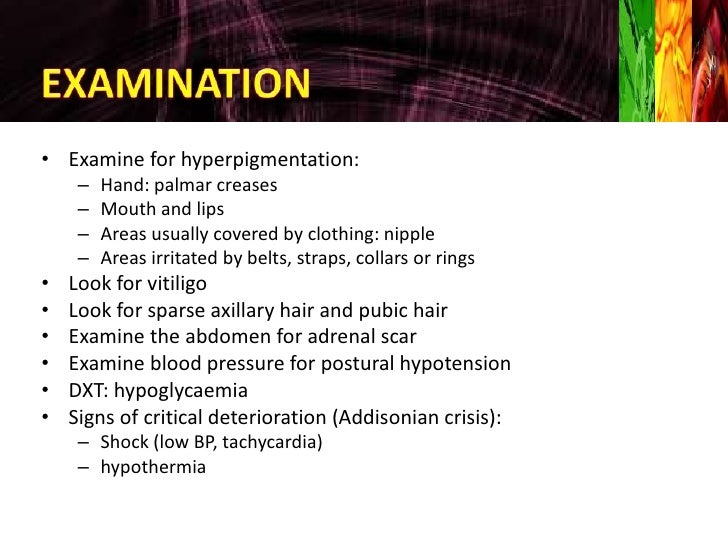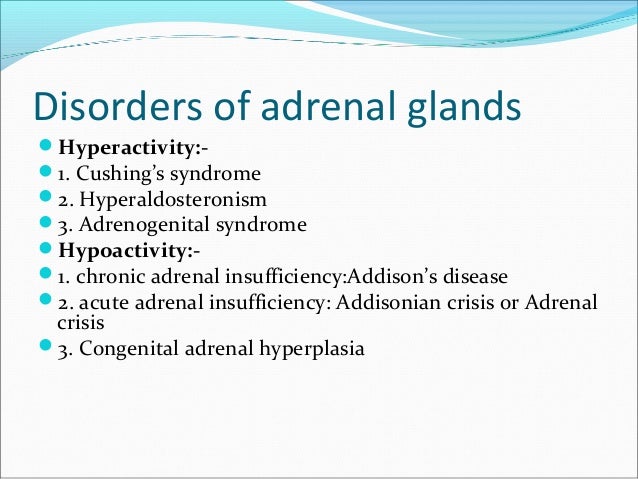
This approach is preferred for very large tumors and for tumors with a high risk of cancer. Open Adrenalectomy uses a large incision (usually beneath the rib-cage).patient characteristics (body size, shape, medical conditions, previous operations, etc)Īn Adrenalectomy can be performed either as an open and laparoscopic or Robotic procedure.tumour size and type (benign or malignant).The surgery is performed under general anaesthesia and requires an overnight stay in the hospital (much longer if open approach is employed). Specific medications before, during and/or after your surgery.Īn Adrenalectomy involves the removal of the adrenal gland.Consultation with other specialists may be required depending on your medical problems.Specific blood and urine metabolic work,.Act as hormone replacement for low hormone production.Stop the excess production of hormones, or.Medications are available for some forms of Adrenal Disease.

There are two types of treatments available for Adrenal Disease, these are include: Typically treatment is offered in a multidisciplinary setting in collaboration with endocrinologist. Treatments for Adrenal Disease vary depend on the type of the disorder.

Skin problems, such as acne or reddish-blue streaks on the abdomen or underarm area.

Upper body obesity, round face and neck, and thinning arms and legs.Symptoms of Adrenal Disorders vary depending on the type of disease. What are the Symptoms of Adrenal Disease? In addition, some medications can cause problems with how the adrenal glands function. A problem in another gland, such as the pituitary, which helps to regulate the adrenal gland.Functional adenomas (pheochromocytomas, Conn’s).These disorders can occur if there is a problem with the adrenal gland itself.Ĭauses of adrenal gland disorders include People with certain hereditary conditions have a higher risk of developing an adrenal gland tumour. Adrenal Gland Anatomy Who are at Risk of Adrenal Disease?


 0 kommentar(er)
0 kommentar(er)
